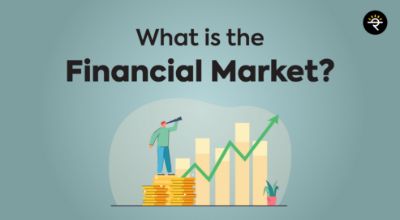It is close to the month-end and you realize you need to go for your monthly shopping. Let’s say you need to get some snacks, fruits, clothes, personal care products, stationery, and utensils but you don’t have the time to go around the town visiting different shops for different items. Where would you go? Supermarket! A supermarket would be like your one-stop solution for all the things you need.
Now, think of the Indian Financial Market as a supermarket, where all kinds of financial assets/instruments can be bought and sold. Would you like to know more? I got you! In today’s blog, we will be understanding what is a Financial Market. Who are the market participants? Why is it important? and What is the structure of the Financial market in India? So, let’s get started!
What is the Financial Market?
I guess the name suggests itself. The Financial Market is a marketplace, where buying and selling of various financial asset/instrument take place. The financial assets being traded in this market can be stocks, bonds, currencies, commodities, etc. It brings together the buyers and the sellers who are interested to trade in a particular instrument. So, the stock market, bond market, forex market, commodities market, and any other market trading in financial instruments together, fall under a single umbrella, which is the Financial market. These markets operate in a proper structure but, more on that later.
Participants include investors (institutions, individuals, government, etc.) wishing to invest in various investment avenues, entities /governments wishing to raise funds, financial intermediaries (exchanges, brokerages, banks, mutual funds, etc.) and regulatory bodies (RBI, SEBI, etc.).
What is the importance of the Financial Market?
- Enables smooth circulation of Funds :
The market participants continuously interact with each other. Thus, funds flow efficiently from investors to businesses/government and vice versa.
- Encourages people to invest :
Various financial instruments like stocks and bonds have given better returns than traditional options like FD’s or Savings. Improved transparency, proper regulation and rising financial literacy in India have ultimately encouraged people to trust and earn good returns by investing in markets.
- Reflection of economic growth :
I think the 2008 crisis would be the best example to understand this point. The financial market and economic growth go hand in hand. The performance of financial markets is reflected in the strength of the economy.
Structure of Indian Financial Market

It is a marketplace where short-term borrowing and lending of funds take place. This happens through various money market instruments with maturities ranging from a day up to a year. Banks usually use money market instruments to borrow money and meet their short-term liquidity requirements as per RBI guidelines. Types of money market instruments include T-bills, Certificate of Deposits (CD), Commercial papers (CP), Money market MF, etc. Individuals and institutions invest their excess or idle funds in these instruments and earn interest in a short period.
In simple words, the Capital market is a marketplace where funds can be raised by businesses and governments for more than a year. These raised funds are utilized for their plans and growth. Interested investors can lend their surplus funds to earn good returns. This happens via various capital market instruments like stocks, bonds, etc. So, the Stock market and the Bond market comes under this umbrella. If you want to understand what bonds are, you can check out my YouTube video.
The Capital market is further divided into Primary markets and Secondary markets.
- Primary Market :
It is a marketplace where companies and the government raise funds for the long term by issuing shares or bonds for the first time to the public. Because of this, it is also known as the New issue market. Here, the transaction happens between a buyer and the company/government issuing the security. When a company comes up with an IPO (Initial Public Offer), it takes place in this market.
Let’s take the example of Happiest Minds IPO. Investors who applied for the IPO had to go through the Primary market. To do so, they submitted their bid price to the company via their brokers. Later, the investors who got the allotment in this IPO received the shares directly from the company via their brokers again.
- Secondary Market :It is a marketplace where already-issued securities from the primary market are bought and sold. Hence, it is also known as the after-market. Here, new securities are not created, unlike the primary market. Trading and investing take place in already existing shares or bonds. A company or government is usually not involved in the transactions. It purely happens between a buyer and a seller through exchangesLet’s continue with our previous example of Happiest Minds IPO. There might have been so many investors who were interested in the company but did not get the allotment. Also, there might be investors who got the allotment but want to sell their shares. So, these investors will now buy and sell their shares when the company gets listed on the stock exchanges. This is nothing but the secondary market. Once the company is listed, buyers and sellers can trade in these shares on the stock market.
There’s a lot more to learn about the primary and secondary market. If you are keen on learning what exactly goes around in these markets and how they work in detail, you can check out my course “Basics of Stock Market” at the link below.
Bottom line:
Our Indian financial market has come a long way since Independence. It has opened up so many options for us to invest in and to take advantage of growing businesses and the national economy. It’s always a better idea to understand the overall structure and operations of the Financial market before we make trading or investing decisions.




